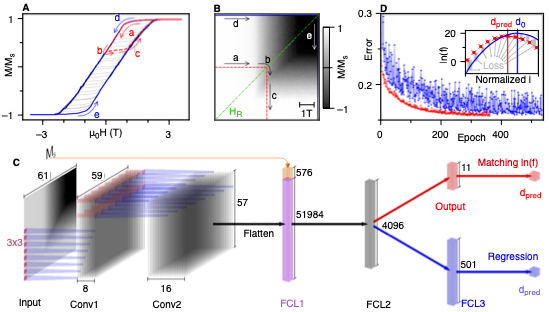Machine learning magnetic Hamiltonian parameters

Bradley Fugetta (C’23) is first author on a recent paper, “Machine-learning recognition of Dzyaloshinskii-Moriya interaction from magnetometry,” published in the journal Physical Review Research. The paper, which is based on Bradley’s undergraduate research, shows that it is possible to use machine learning to extract Hamiltonian parameters of magnetic materials from magnetometry measurements. The project was led by Prof. Gen Yin, together with Profs. Amy Liu and Kai Liu as collaborators. Bradley, who made significant contributions to all components of the project, said that “participating in this research from its inception to the preparation of the manuscript has been an immensely rewarding and fulfilling experience.”
The paper focuses on estimating the strength of the Dzyaloshinskii-Moriya interaction (DMI), one of multiple competing magnetic interactions that together determine the spin texture in a magnetic material. The DMI favors canting of neighboring spins and can thus stabilize nontrivial topological spin textures that have potential to serve as low-dissipation information carriers. It is challenging to determine the DMI strength in a material directly, either from calculations or experiments. Bradley’s work shows that a convolutional neural network can extract the DMI magnitude from minor hysteresis loops, or magnetic “fingerprints,” of a material, which are readily available by conventional magnetometry measurements. This provides a convenient tool to investigate topological spin textures for next-generation information processing.
